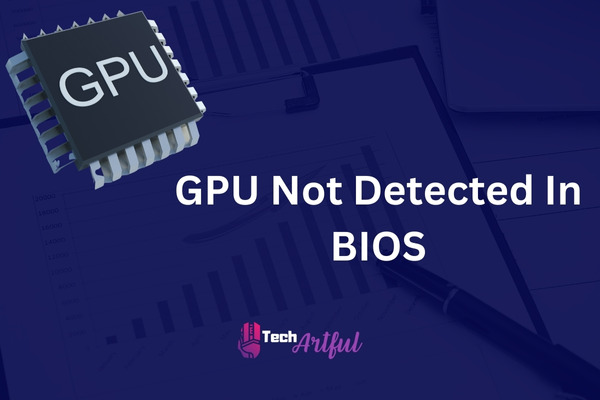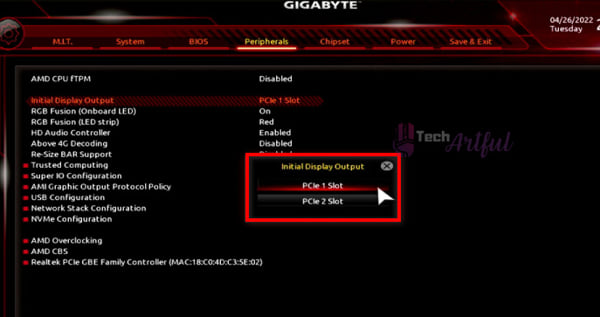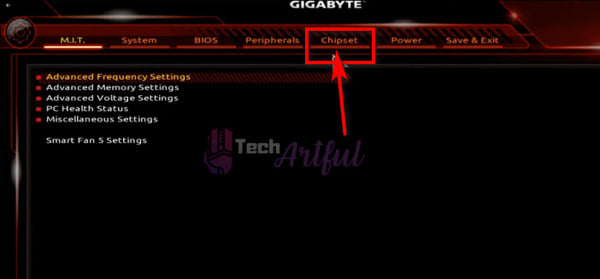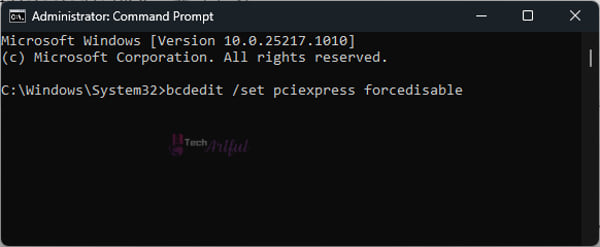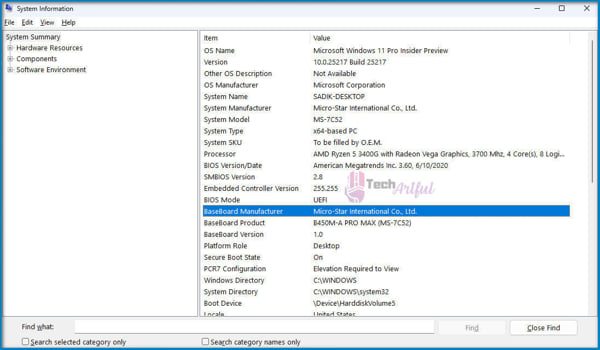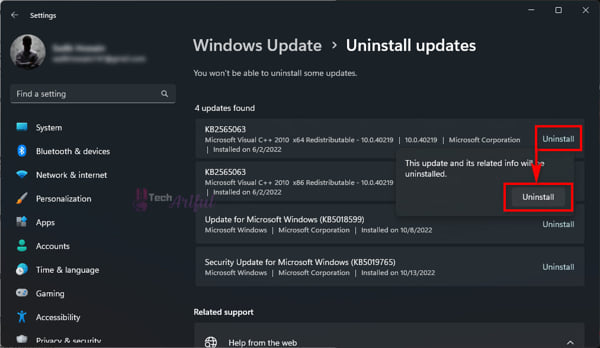Is your GPU fan not detected in BIOS? Don’t worry, you can easily fix this problem after going through this post.
Graphic cards, which are often referred to as graphic processing units or GPUs, are essential pieces of hardware that are required to maintain the functionality of our displays while running complicated applications. However, if the BIOS is unable to detect them, the program will have less assistance, and you might get a blank screen.
The good news is, there are some approaches by taking which you can make sure that your GPU is compatible with the other components of your computer.
In this tutorial, we will go through how to fix GPU not detected in BIOS by making use of a few different tools so that your display will never let you down again.
Reasons Why GPU Not Detected In BIOS
Figuring out why it’s happening is the first step toward finding a solution to the problem of the GPU not being detected. There may be several factors contributing to the disappearance of your GPUs, and you must identify the specific one that is giving you difficulty.
I have compiled a list of several explanations that might account for the disappearance of GPU from the boot menu. You are the undisputed expert when it comes to determining the correct answer.
The following is a list of possible explanations for why the GPU is not showing:
- Inappropriate GPU Installation: Incorrect installation is the most prevalent factor that contributes to this problem, and it is also the most easily preventable. If you make incorrect use of the GPU slots, you will not be able to access their functionality. Verify once again that the graphics processing unit was installed properly.
- GPU Driver Is Not Correct: The installation of a GPU with an incorrect or out-of-date driver also causes the boot menu to conceal the disk to prevent a conflict from occurring.
- BIOS Driver Is Out Of Date: A GPU driver installed on a computer with an outdated BIOS is not going to be compatible with that GPU driver. It is unable to correctly identify the graphics unit as a result of its confusion.
- Bugs In the Operating System:Sometimes, GPU doesn’t appear in BIOS and in the graphics settings of your computer due to several types of bugs of the operating system.
These are some of the potential causes that may explain why your GPU is going unnoticed. In addition to these potential causes, there may be others, such as a malfunctioning graphics processing unit (GPU) or a defective motherboard. But you shouldn’t be concerned. This is the worst of the worst-case situation that could happen.
You should give the suggested corrections to the list a shot. I’ll let you know when it’s appropriate for you to start freaking out.
How To Fix GPU Not Detected In BIOS Problem
Now, I’ll explain how you can work around this problem so that it doesn’t affect your gaming PC.
If you have determined which of the potential solutions described in the previous paragraph is the root of your issue, then you should implement the corresponding remedy. In addition, if you are uncertain as to the cause, proceed with the approaches that are listed below in the correct sequence.
During my investigation into this problem using my computer, I discovered that these are the answers that are the most practical. You are likely to have to read with careful consideration and carry out the tasks in the prescribed manner. These solutions will also help if the fan on your GPU is running but isn’t being noticed.
Remember: Before you attempt to repair anything else, check to see if your graphics processing unit (GPU) can be supported by your power supply unit. Check that it can provide the necessary amount of power to your system. A power supply unit (PSU) that isn’t powerful enough may result in a multitude of unpleasant issues, such as the GPU not being detected.
The following are the solutions that need to be applied to you:
1. Configure BIOS Settings
There are situations when improper BIOS settings are to blame for your GPU not being identified.
Here’s how you will need to modify the settings in the BIOS:
- While your computer is booting up, you may access the Boot menu by pressing the Esc key, the F2 key, the F12 key, or the Delete
- Use the arrow keys on your keyboard to get to the BIOS menu, then press Enter to make your selection.
- Look for the PCI and PCIe settings, as well as the onboard backup. Options such as IGP > PCI > PCI-E or PCI-E > PCI > IGP are shown here for your consideration.
- Adjust so that it is set to the second Do not alter the option in your BIOS if it is the second one; it is the default.
- Now, save any changes and leave.
If the problem still persists then follow the next step.
2. Turn On Discreet GPU
In addition to being a relatively straightforward method, this solution will also fix the problem. This changes another parameter in your BIOS, which in turn enables you to see the graphics processing unit (GPU).
The following is the procedure that must be followed to implement the settings:
- Start up your computer and then keep hitting the F2 or Delete to enter the BIOS setup screen.
- Utilize the arrow keys on your keyboard to get to the Chipset Configuration
- Choose GPU Configuration from the menu, and then search for the GPU function
- If the function is disabled, turn it back on to enable it.
- Don’t forget to save your changes before you go.
By using this approach, your BIOS will be able to recognize a newly installed GPU. This approach ought to put an end to the problem, provided that your BIOS does not have any problems. You don’t need to be concerned about the possibility that the issue exists since I am resolved to assist you no matter how. Let’s get started with the procedure that will be described below.
3. Enable GPU Through Command Prompt
Simply entering a few simple instructions into cmd to activate your GPU detection is all that is required.
The following is the proper approach to exercising command:
- In the Windows search box, type cmd to bring up the command prompt.
- To execute the command prompt with administrative privileges, right-click the prompt and pick the Run As Administrator
- Please make a copy of this command and paste it into the cmd window: bcdedit /set PCI-Express force disable.
- To proceed with the task, use the Enter
After you have received confirmation that the process was completed successfully, you should restart the desktop computer and check to see whether this fixes the issue.
4. Update BIOS
Sometimes old BIOS versions are unable to detect the latest generation hardware. So, to fix this problem you may need to install the most latest version of the BIOS in order to solve this problem.
Before helping you let me tell you that, improperly updating the BIOS might result in a variety of catastrophic issues. Therefore, I ask that you proceed with extreme caution at every stage. And always keep a UPS backup. Otherwise, your motherboard will be dead if the electricity is interrupted during the update.
The following is the procedure for updating the BIOS on your computer:
- Start your desktop computer by turning it on.
- To launch the run dialogue box, press the Windows key and R
- To get system information, type msinfo32 into the Run box and hit enter.
- Take note of the information that is shown in the window that has emerged.
- You’ll need to check the manufacturer’s website to find the latest version. after downloading and installing it, don’t forget to restart your PC.
This technique should fix the problem if it was caused by an old BIOS version, as was the case if the detection issue occurred. If this is not the case, go to the following technique.
5. Uninstall Operating System Updates
Suppose you’re using your graphics processing unit (GPU) to play games or render films, and everything is functioning well. Then your personal computer will alert you that there is a new version of Windows available, and you will like everyone else does, install the new version. After that, you’ll be completely erased from existence.
Here’s how to remove the OS updates:
- Search for Uninstall Updated on the windows search option and hit the enter button on your keyboard.
- Now locate the latest update that has been installed. Usually, it’s the very first one.
- Now besides the update name, choose the Uninstall button and click the Uninstall button again.
- Follow the on-screen instruction, and the uninstallation process will be done.
Your computer may need a restart after you remove anything. Don’t be afraid to do that; if you do, the problem with the faulty operating system should be resolved.
If your GPU isn’t being detected by your BIOS, you may try these simple solutions, which should be successful. These solutions were effective for me, and I have every reason to assume they will also be successful for you.
Conclusion
Throughout this essay, depending on my personal experience dealing with this issue, I made it my goal to provide the most effective remedies that are now available.
I can guarantee that if you do so, you will be able to fix the GPU not detected in the BIOS problem on your own, and you won’t have to waste time searching the internet for information about it.

